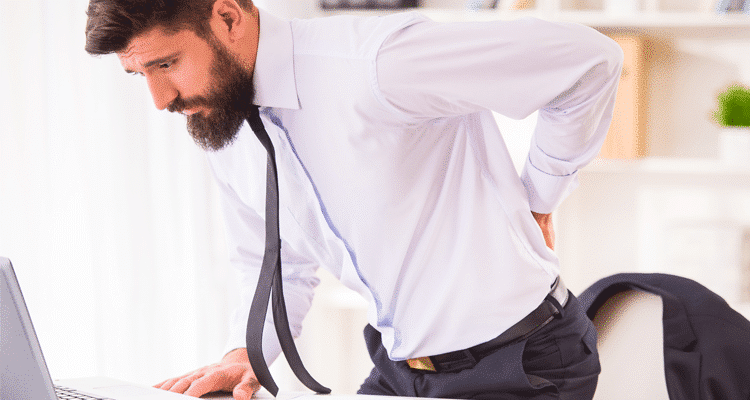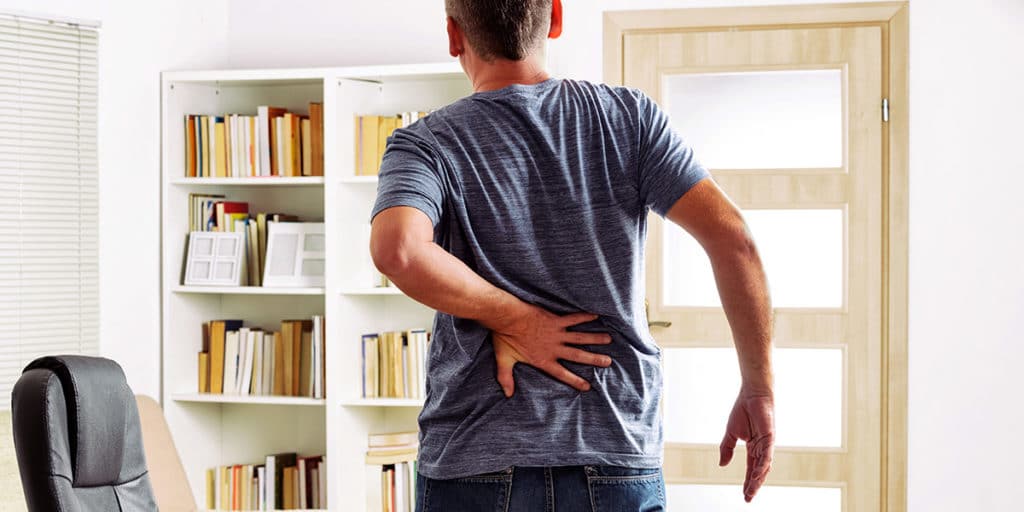Inverted Decompression Shown to Relieve Pressure and Pain from Spinal Stenosis
Spinal stenosis is a painful condition that affects the spinal column and the spinal cord. With several different causes, the best spinal stenosis solution for you may vary from another who suffers from this condition. Fortunately, there is a natural, non-invasive solution that has been shown effective in numerous studies: inversion therapy (or inverted decompression). And there is an FDA-Registered 510(k) Medical Device that you can use in your own home to relieve stenosis-related back pain.
First, we’ll look at the main symptoms and causes, then we’ll dive into how inversion therapy can help those with spinal stenosis.
What is Spinal Stenosis?
Spinal stenosis is a condition in which the spinal canal narrows, causing pressure on the bundle of nerves running down the spine. One way of visualizing the problem is by thinking of your spinal canal as a highway and the spinal cord running through the canal as traffic. As nerves exit the spinal canal (or highway), sometimes there’s traffic and they can become partially blocked. This type of spinal stenosis is called foraminal stenosis. Any blockage or pressure applied to the spinal cord can cause pain, tingling, or numbness.
What Causes Spinal Stenosis?
There are several factors that may cause spinal stenosis. Spinal stenosis is typically found in adults over 50 and the leading cause is arthritis. As people age, their cartilage, which protects and cushions bones, tends to break down. This process combined with the growth of bone tissue is what is known as arthritis.
Younger stenosis sufferers can oftentimes trace their discomfort back to genetics or stress fractures. Occasionally people are born with a smaller spinal canal or foramen, where the nerves exit the spine. Stress fractures in the spine, or spondylolysis, can also cause foraminal stenosis as the bones heal.
Other causes of spinal stenosis are:
- Herniated discs: When discs become dry and cracked the inner material may leak out and press on the spinal cord
- Paget’s disease: A bone disease that usually affects adults and causes overgrowth of bones
- Injuries: Major trauma such as car accidents can cause damage and create swelling of tissue
- Tumors: Abnormal growths that may form within the spinal canal putting excess pressure on the spinal cord
- Thickened ligaments: The strong ligaments that hold your spine erect can become stiff and thickened over time. The thickened ligaments can bulge into the spinal canal causing pressure.
- Genetics: There are some genetic diseases that cause narrowing of the spinal canal and generally affect muscle and bone development throughout the body.

Possible Solutions for Spinal Stenosis
Solutions to relieve symptoms of spinal stenosis are grouped into invasive (surgery) and non-invasive options.
Invasive: There are three typical surgery options.
- Laminectomy: This is the most common surgery and removes the back portion of the vertebra causing the pressure. It may need to be fused to the vertebra above or below.
- Laminotomy: This involves cutting a hole big enough in the vertebra to relieve the pressure without removing full portions. Does not require fusion.
- Laminoplasty: This method is only performed on the cervical portion of the spine. It involves making a hinge on the back portion of the vertebra causing pressure. Metal hardware will often bridge the gap in the opened section of the spine.
Non-invasive: Doctors often recommend that patients pursue non-surgical options first as they are less invasive.
- Medications (which have their own side effects)
- Steroid injections
- Acupuncture
- Stretching
- Chiropractic care
- Physical Therapy
- Inverted decompression
How Inversion Therapy Works for Spinal Stenosis
Inverted decompression, or inversion therapy, is a great way to relieve the pressure and pain in your back. Due to the effects of gravity, the spinal discs between each of the vertebrae become compressed over the course of the day (and eventually, over a lifetime).
Injury to the disc can also cause compression or loss of disc height. The spinal discs becoming smaller is only half of the problem. As they shrink, so does the space between the vertebrae, increasing the risk of pressure on or irritating the exiting nerves.
Inverted decompression relieves the pressure on the spinal discs and nerves by allowing the discs to rejuvenate and rehydrate. As the discs plump up with hydrating fluids, they help to maintain adequate space and ensure nerves have clearance to exit the spine.
Learn more about the Benefits of Inversion.
A clinical trial conducted in 2004 supports the idea that inversion therapy will allow those with disc-related spinal stenosis to resume normal activities. The 14-patient trial concluded that “decompression reduces symptoms and improves…daily living”.1
Decompression has been shown to be very effective at decreasing back pain. One outcome study collected data from 22 medical centers on 778 low back pain patients who received decompression therapy.2 Success was defined as a reduction in pain to a 0 or 1 when rated on a 0-5 scale, and the therapy was successful in 71% of the patients!
Many patients credit inversion therapy using a Teeter with improving their daily lives in drastic ways.
Pierre R. from Dawson, GA says:
“I have had absolutely no back pain since [I started]. It relieves stress and my wife says it has improved my posture. I owe it all to my Teeter inversion table. It has given me my life back.”
Just two months before, Pierre was facing surgery that would put him out of work for 3-6 months. He wasn’t able to do any of the activities he loved because of his spinal stenosis.
Bill B. from Nevada shared that he takes his Teeter Inversion Table on the road while traveling in his motorhome. Bill credits the Teeter with allowing him to continue walking after being diagnosed with spinal stenosis.
“Without the Teeter, I would be walking with a cane or a walker. The Teeter is a high-quality product and I recommend it over back surgery every time.”
Why Teeter
Teeter is the ONLY brand that is both UL safety certified and 510(k) registered with the FDA as a class one medical device. Our inversion tables are indicated for spinal stenosis, sciatica, herniated discs, and 6 other causes of back pain. Teeter is the leader of the inversion industry with over 30 years of innovation and more than 3 million satisfied users. Choose Teeter for the quality you can trust and a life free of pain.
Find Relief Now. Pay Later.
Now you can try Teeter in your own home FREE for 30-Days, 0% APR* with Affirm.
